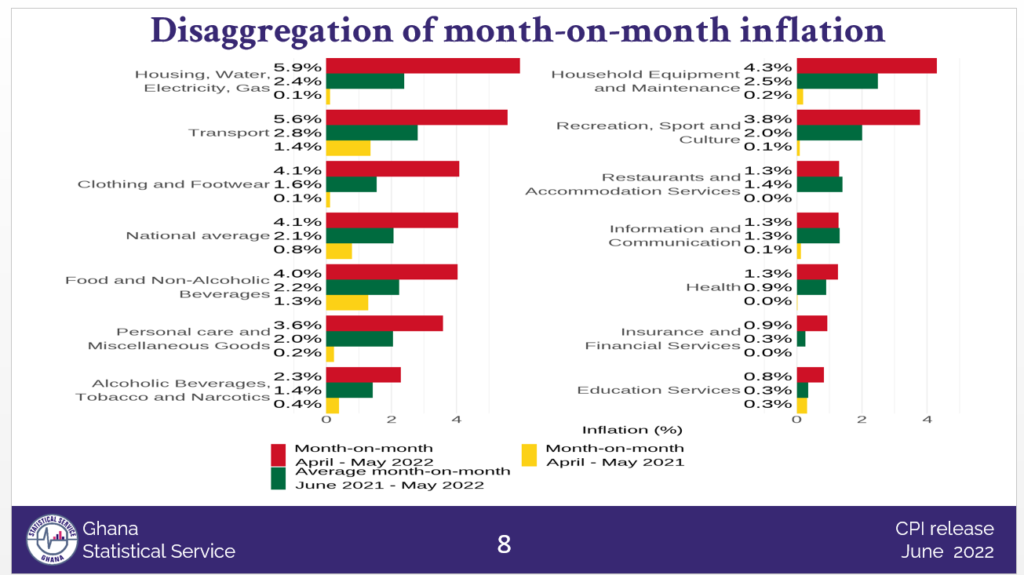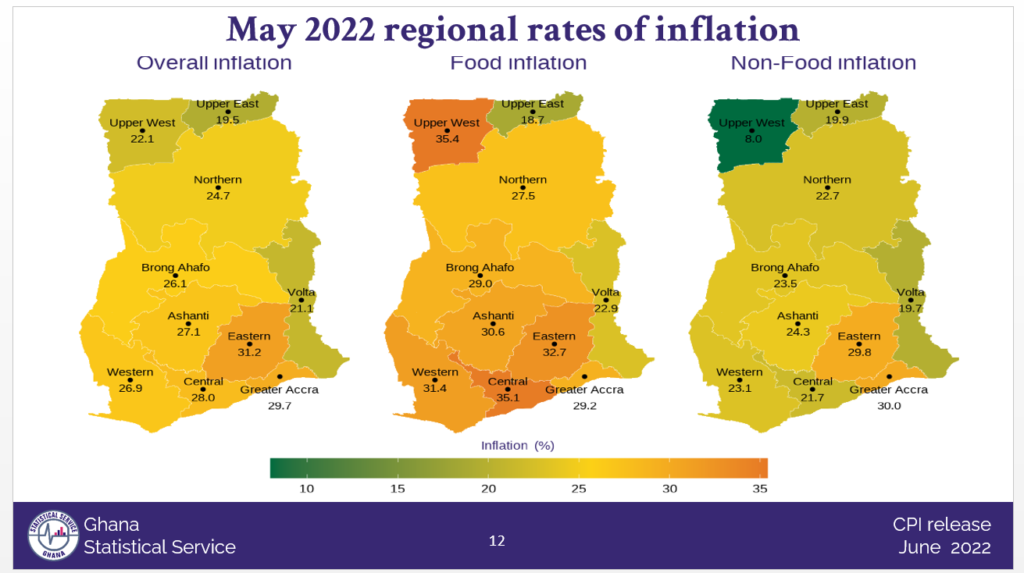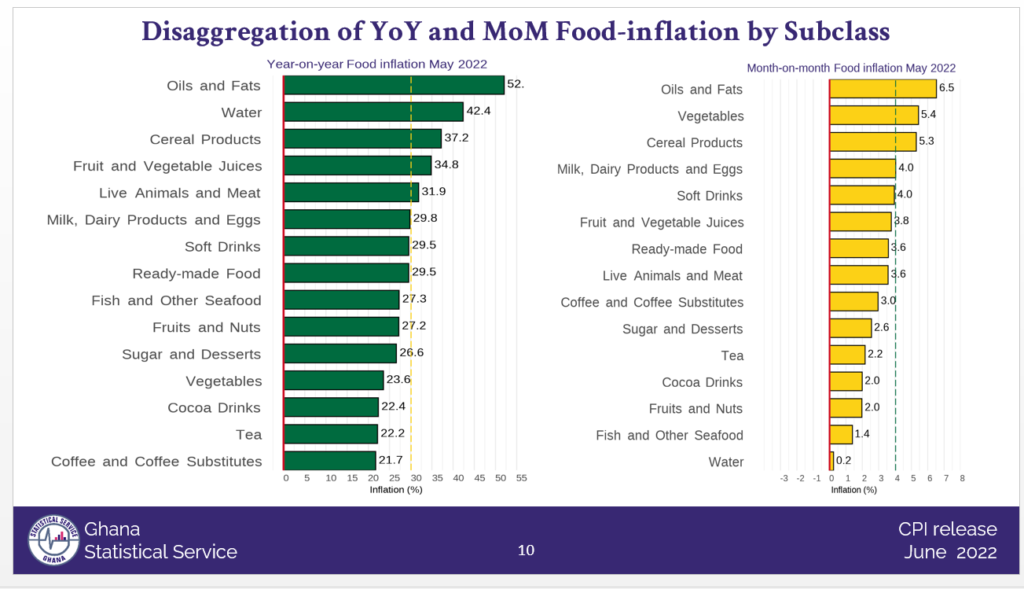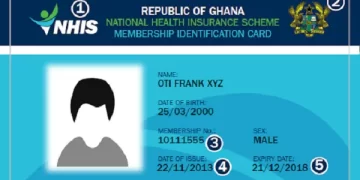Transport fares increase and rising food costs pushed the rate of inflation to 27.6 percent in May 2022, according to the Ghana Statistical Service.
This compares to 23.6 percent in April 2022.

According to the Government Statistician, Professor Kobina Annim, inflation rates for transport (39.0 percent), household equipment and maintenance (33.8 percent), housing, water, gas, and electricity (32.3 percent), and food and non-alcoholic beverages (30.1.6 percent) were all higher than the national average (27.6 percent ).
12 of the 13 divisions have higher inflation rates in May 2022 than the rolling average from June 2021 to May 2022.

According to the report, food inflation in May 2022 was 30.1 percent, up from 26.6 percent in April 2022. Non-food inflation, on the other hand, was 25.7 percent in May 2022, up from 21.3 percent the previous month.
The difference between food and non-food inflation was 4.4 percentage points in March 2022, compared to 5.4 percentage points in April 2022.
Looking at year-on-year food inflation for May 2022, five sub-classes had greater inflation rates than the total food inflation rate (30.1 percent ). Oils and fats were well ahead (52.0 percent), followed by water (42.4 percent ).

The inflation rate for imported products was 28.2 percent, up from 24.7 percent in April 2022, while the inflation rate for locally manufactured items was 27.3 percent, up from 23.0 percent in April 2022.
Meanwhile, the Eastern area had 31.2 percent inflation for the first time in a long time, owing to increased food costs in the region.
The Upper East area, on the other hand, had the lowest inflation rate of 19.5 percent.

While the Greater Accra region had 29.7 percent inflation, the Ashanti region experienced 27.1 percent inflation.
If the pace of inflation continues, interest rates are projected to rise higher.
Short-term money market interest rates are now hovering around 22 percent or higher.
SOURCE: myjoyonline



























